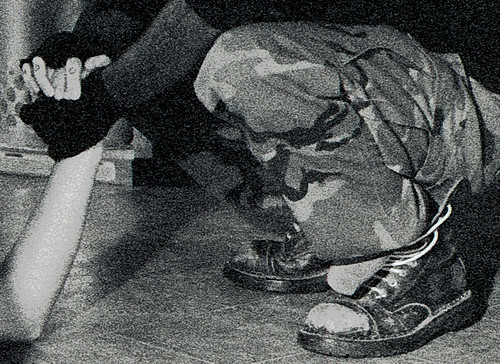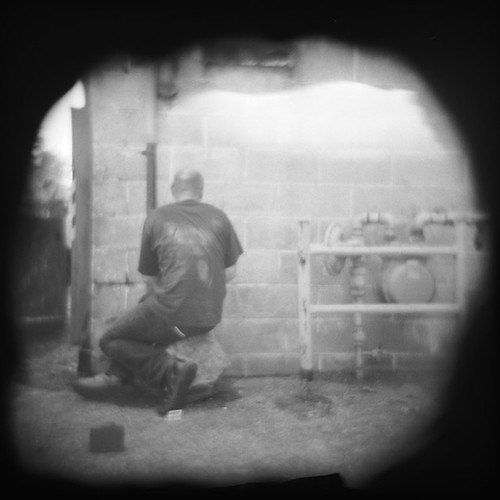Here are some tips for getting more/larger grain in your pictures:
- Push ISO3200 film as far as it’ll go in your developer. As a rule, pushing increases grain.
- Use a high-actuance developer like Rodinal and…
- Agitate the hell out of it.
- Shoot as small a frame size as possible (the smaller the negative, the greater the enlargement factor, and the bigger the appearance of grain). There are several options for sub-"full frame" 35mm: the Olympus Pen series are half frame, and Canon/Bell & Howell made some as well. You can get anything from point & shoots to really sweet SLRs (check out the Olympus Pen F and FT for that, I have an FT and love it).
If you want more cowbell, check out the quarter-frame QuadCam (only $13.95 from American Science & Surplus), or bite the bullet and give those monopolistic rip-off artists at the Lomographic Society way too much money for an Oktomat (1/8 frame) or a Pop 9 (1/9 frame).
There’s lots of info on subminiature cameras at subclub.org.
- Cross process color negative (C-41) film in black and white chemistry. Underexposure helps, the only digital manipulation on this was the sepia toning:

The Depravity of Voyeurism, underexposed [I think it was] Kodak Portra 400VC, developed in Diafine. It’s this grainy on a 4×4cm negative, so a submini would probably be really unbelievably grainy. - Ilford Delta 3200 film processed in Diafine is a particularly grainy combo for me. Here’s maybe 1/5 of a 35mm frame with no manipulation at all:

(Bigger version here)


